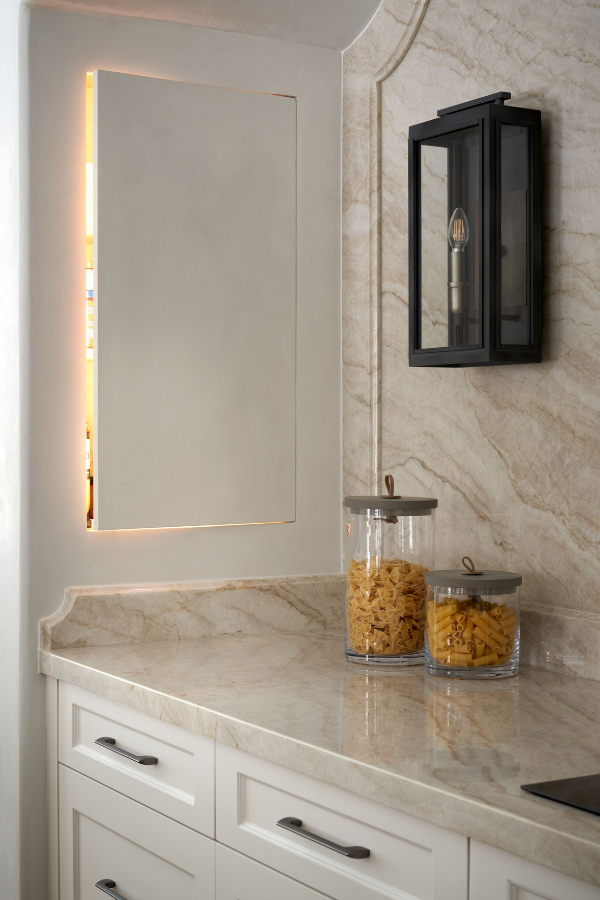Everyone loves a clutter-free countertop, but no one enjoys rifling through drawers or rooting around the pantry while cooking for one’s family or preparing to entertain guests. Keeping your kitchen organized and ensuring all essentials are accessible requires thoughtful space planning and clever storage solutions. In this post, we round up all of our top kitchen storage tips. Learn to optimize unused space, organize your pantry, keep open shelves clean, and make the most of your kitchen cabinet space. From designing custom cabinetry to creating zones, here are all our kitchen storage ideas to make weeknight mealtime and weekend entertaining much easier.
Distinguishing Between Different Types of Pantries
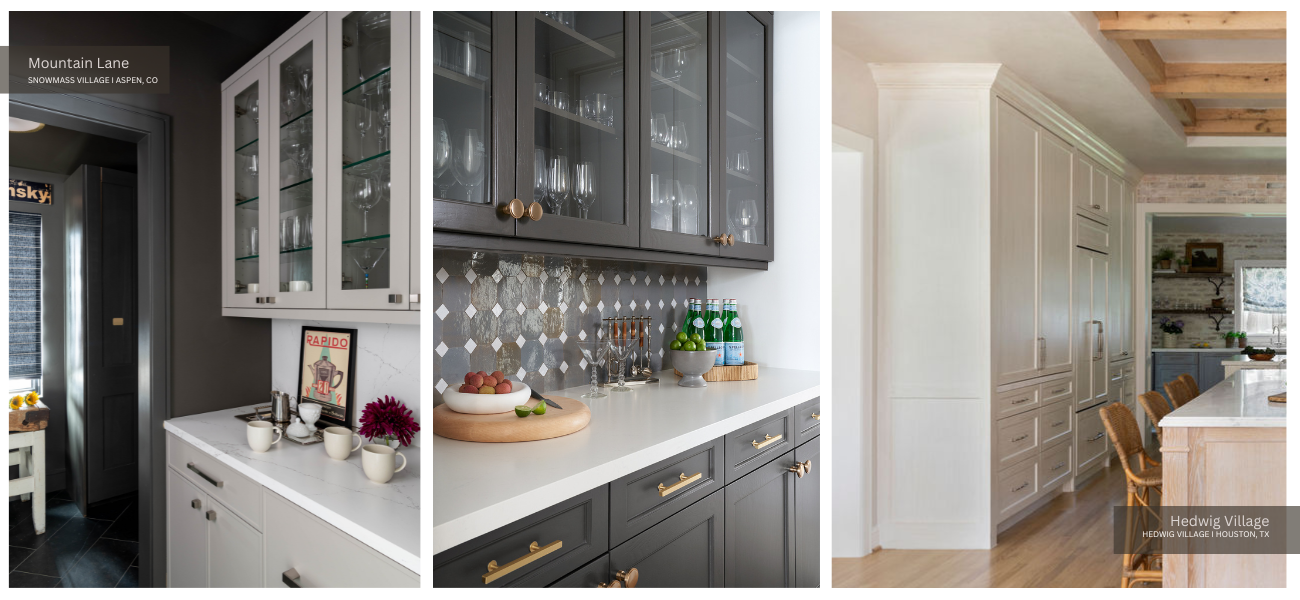
Before we delve into our exhaustive list of kitchen kitchen organization ideas, let’s briefly review the different types of pantries so you have a bit of background before working with a designer or builder on your upcoming kitchen remodel. Whether you walk in or pass through, the pantry is the workhorse of kitchen storage.
Pantries add extra storage to minimize clutter and clear counter space while keeping small appliances, dry foods, cleaning supplies, household products, and other kitchen essentials conveniently close. At LUDC, we often design day pantries and butler’s pantries for our clients. Day pantries and butler’s pantries both help optimize kitchen storage, but they serve different purposes and are usually situated in different parts of the house. Which type of pantry is right for your family? Let’s consider the many options available to homeowners.
Walk-in Pantry
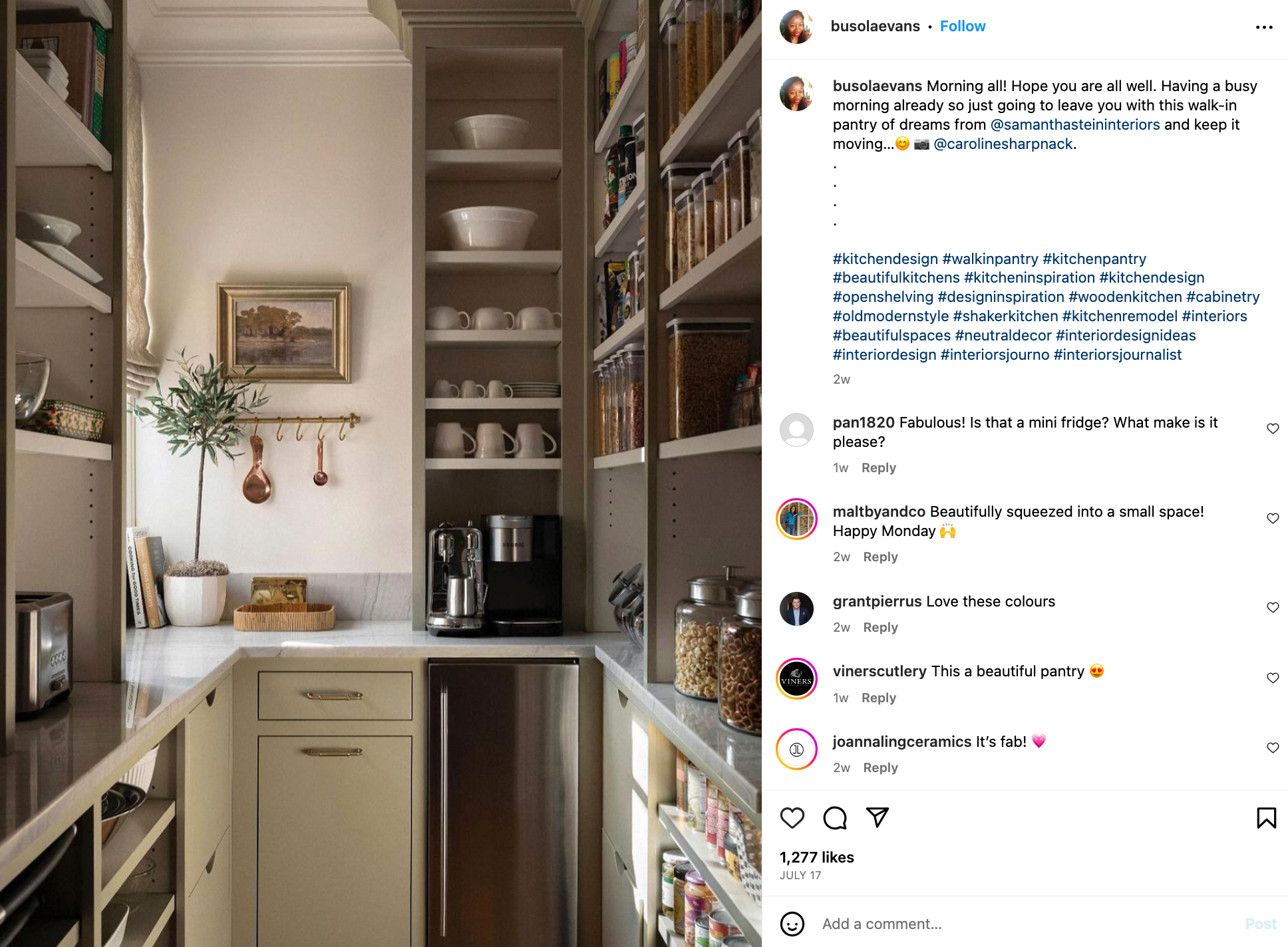
Certainly the most desirable of all pantries, the walk-in pantry is a small room with enough space to walk into and move around. Walk-in pantries often have shelves, cabinets, hooks, and drawers to store a wide variety of food items, kitchen tools, and small appliances. They are highly desirable for their immense storage capacity and organizational potential.
Walk-in pantries allow you to take advantage of vertical space, pantry doors, and floor space. To the latter, we love the idea of placing small but slightly unwieldy appliances — like your espresso machine or blender — on a rolling cart in your walk-in pantry. Alternatively, stock a bar cart you can roll out to the dining room or formal living area while entertaining.
Butler’s Pantry or Serving Pantry
A butler’s pantry is a serving area that connects the kitchen to the dining room or formal living area. It is used to stage and serve food while entertaining guests and usually includes storage for fine china, glassware, and serving dishes.
As such, a butler’s pantry might have clear or smoked glass cabinet doors that allow homeowners to display fine china and wine glasses. Traditionally, a butler’s pantry was used by household staff to prepare and serve food or drinks without disrupting the dining area.
Characteristics of a Butler’s Pantry
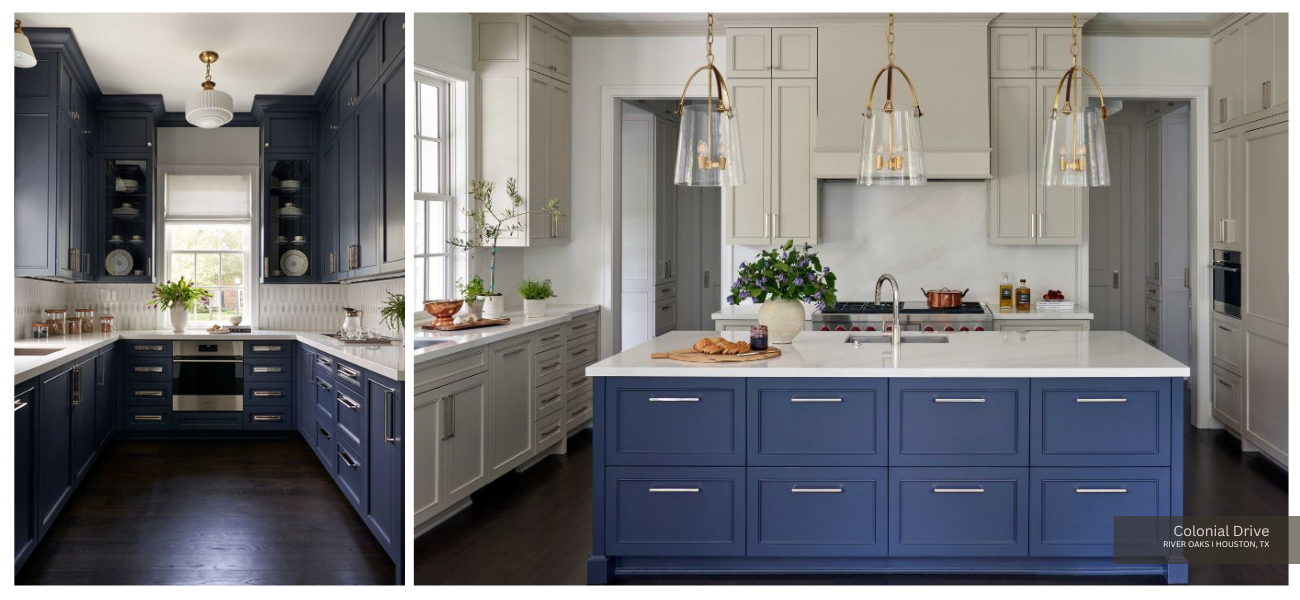
Located between the kitchen and formal dining area, a butler’s pantry is often hidden behind doors or a pass-through. It contains storage for fine china, glassware, silverware, and serving dishes. A butler’s pantry is typically equipped with countertops for plating and serving food, and may have a sink for cleaning dishes or filling glasses.
It provides a space for staging and organizing meals before they are brought to the dining table. Usually larger and more luxurious than a day pantry, a butler’s pantry is intended for entertaining and hosting formal gatherings. Here, we emphasize aesthetics and presentation—often featuring decorative elements and design touches like etched or frosted glass, stunning millwork, and mosaic tile.
What’s the Difference Between a Butler’s Pantry and a Prep Kitchen?
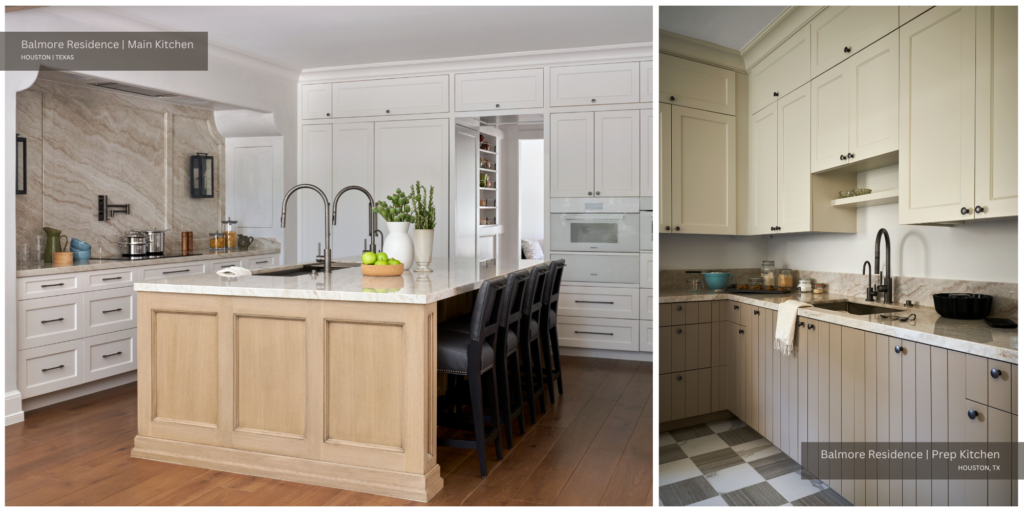
A prep kitchen — also referred to as a secondary or auxiliary kitchen — is a space designed specifically for food preparation and cooking activities but separated from the main kitchen. It is equipped with essential kitchen appliances, countertops, sinks, and storage solutions, all of which allow for extensive meal prep and cleanup without cluttering the main kitchen. The prep kitchen is often used for tasks like chopping, mixing, and washing. It might also be used for handling large-scale cooking projects or entertaining guests.
A butler’s pantry — is a transitional space between the kitchen and the dining area. Traditionally, it was used by butlers to store serving items, prepare for meals, and manage household duties. The primary function of a butler’s pantry is to facilitate the serving of meals and to act as a staging area for entertaining, rather than for extensive food preparation.
Day Pantry
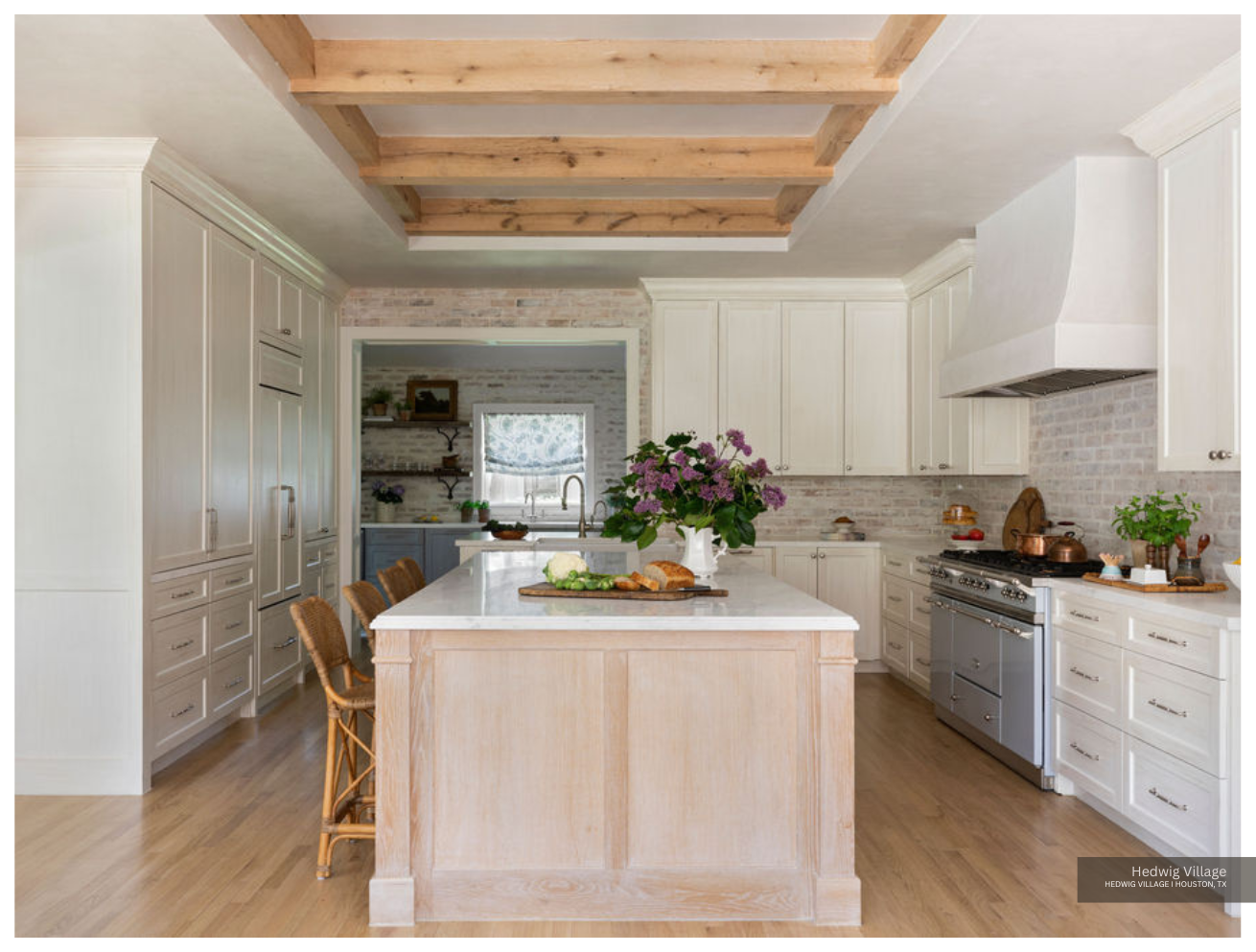
A day pantry is a storage area either within or adjacent to the kitchen. It is designed for easy access and convenience during daily cooking and meal preparation. The primary purpose of a day pantry is to store commonly used food items, cooking essentials, and kitchen tools. It functions as an extension of the main kitchen storage — providing additional space to keep things organized and within reach.
Characteristics of a Day Pantry
A day pantry is located in close proximity to the main kitchen area. It is designed for practicality and efficiency in daily operations. With shelves, cabinets, drawers, and other storage solutions, it accommodates a variety of items and is often organized to support easy access and quick retrieval of ingredients while cooking. It is usually smaller in size than a butler’s pantry.
Freestanding Pantry Cabinet
A freestanding pantry is a standalone cabinet designed to function as added kitchen storage. Imagine a china cabinet or hutch. It can be placed in the kitchen or any other suitable location and comes with shelves, drawers, and compartments for storage.
Slide-Out Pantry
A slide-out pantry is a narrow, vertically-oriented cabinet with sliding shelves that can be accessed by pulling the shelves forward. These pantries are typically used for spices and collections of smaller kitchen items.
Under-Stair Pantry
An under-stair utilizes the space under a staircase for storing pantry items. This is a creative way to make use of an otherwise unused area in the home.
What’s the Difference Between a Root Cellar and a Pantry?
A pantry is a storage area, usually located in or near the kitchen, used to store a wide variety of non-perishable food items, dry goods, canned goods, cooking essentials, and kitchen tools. It is designed for easy access to everyday items used in meal preparation and cooking.
A root cellar is a specific type of food storage area designed to keep fruits, vegetables, and other perishable items cool, dark, and at a consistent temperature and humidity level. Root cellars are typically located underground or in a cool, insulated area of a building to take advantage of the natural temperature stability provided by the earth. They were traditionally used before modern refrigeration to preserve vegetables, root crops, and fruits for extended periods, especially during the winter months.
While both pantries and root cellars involve food storage, the primary difference lies in the types of items they store and their intended purpose. Pantries are used for dry and non-perishable goods, whereas root cellars are specifically designed for storing perishable produce that benefits from a cool and humid environment.
Kitchen Storage Tips: How to Organize Your Pantry in 9 Simple Steps
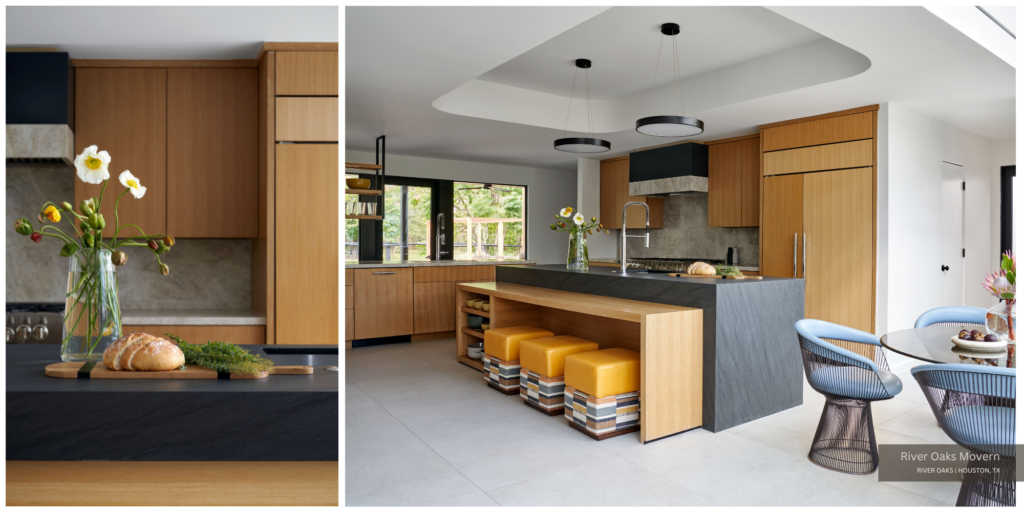
Properly organizing your pantry can make meal preparation, cooking, and entertaining much more efficient and enjoyable. Read on for our very best tips for organizing your pantry’s storage space.
#1 Declutter First
If working with an existing pantry, begin by emptying the entire pantry so you can declutter. Check expiration dates and dispose of any expired or stale items. Donate unopened, non-expired items you will not use to a food bank or charity.
#2 Categorize All Items
Next, group similar items together. For example, place canned goods together, baking supplies together, snacks together, pots and pans together, etc. This will help you find what you need quickly. No need to root through the entire pantry just to find your 9 x 12 baking sheets or pumpkin puree!
#3 Use Clear Food Storage Containers
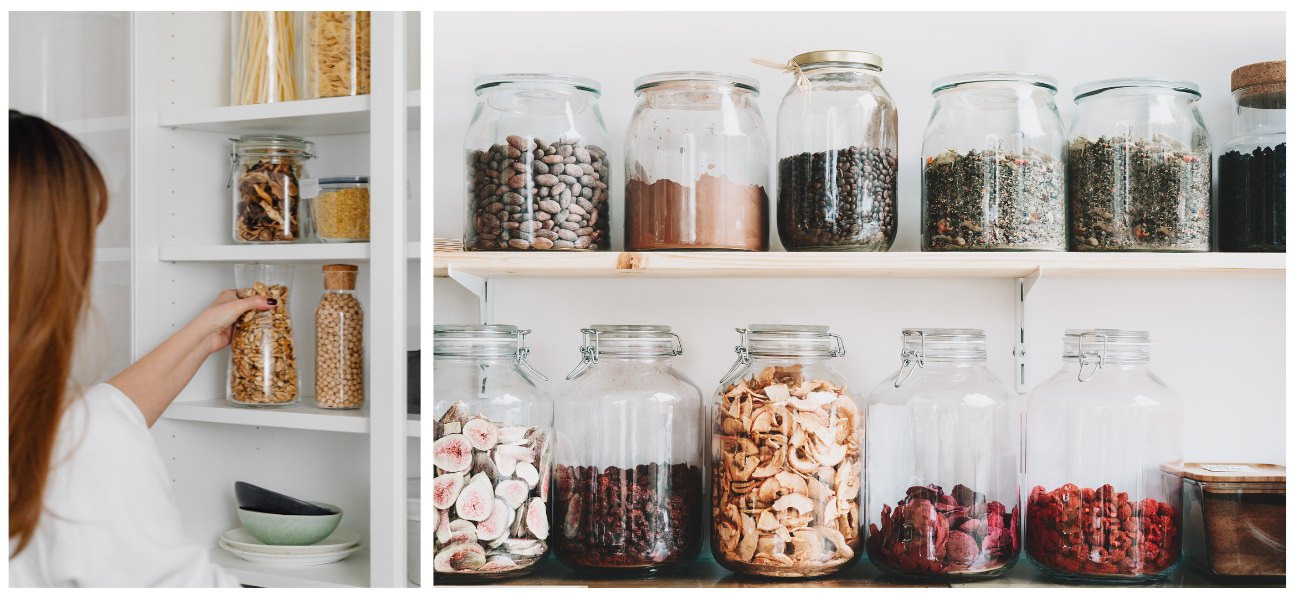
Store dry goods like rice, pasta, flour, and cereal in clear airtight containers with expiration date labels. Toss flimsy cardboard tea packaging and cereal boxes.
Doing so not only keeps dry foods fresh and free from cardboard-eating pests like carpet beetles and silverfish. It also allows you to monitor the condition of stored foods and determine when a particular item is running low.
#4 Invest in Other Storage Solutions
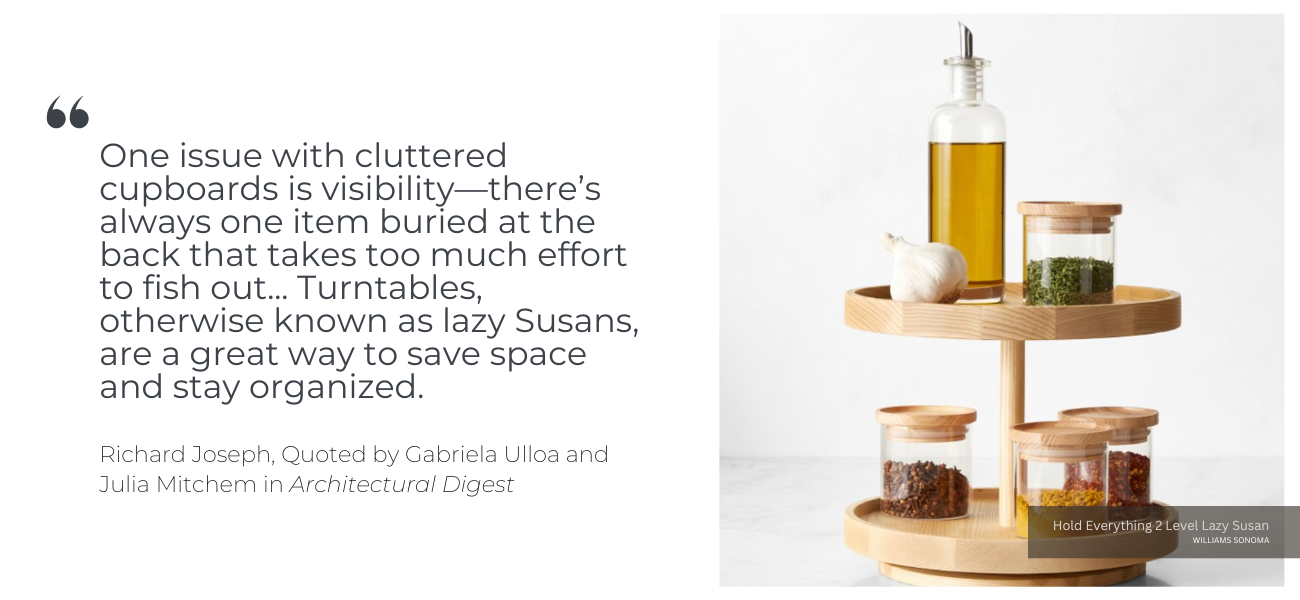
Pantries are typically larger and more open than your kitchen cabinets. As such, clever storage solutions are needed to keep the multifunctional space functional. Invest in drawer organizers, shelf risers and dividers, baskets, and stackable bins to maximize space and keep items organized.
As Gabriela Ulloa and Julia Mitchem note in an article for Architectural Digest, Lazy Susans or turntables can also be helpful for accessing items at the back of deep shelves. Quoting Richard Joseph, Ulloa and Mitchem write that visibility is “’one issue with cluttered cupboards…there’s always one item buried at the back that takes too much effort to fish out.'”
Turntables allow you to access jars, lids, and other items banished to the back of your pantry. Mitchem, Ulloa, and Joseph all recommend adding “a tiered turntable for even more storage.”
#5 Consider Door Storage to Save Space
If your pantry has a door, use it for additional storage. Install a door-mounted organizer for spices, condiments, or small snacks.
#6 Ensure Frequently Used Items Are Always Accessible
As noted above, pantries store a variety of household items from paper towels to boxes of pasta. You might store holiday cookie cutters and serving platters in the same storage unit as the toaster you use every day.
To avoid fighting your way to top shelves or storage bins in the back of your pantry, place commonly used items at eye level or on lower shelves for easy access. If your pantry has tall ceilings, consider installing hooks or additional shelving near the top just like you would in a garage. Reserve higher shelves for less frequently used items or items that you buy in bulk.
If your children have access to the pantry, place healthy snacks and child-safe appliances at a level they can reach.
#7 Create Zones Based on Categories
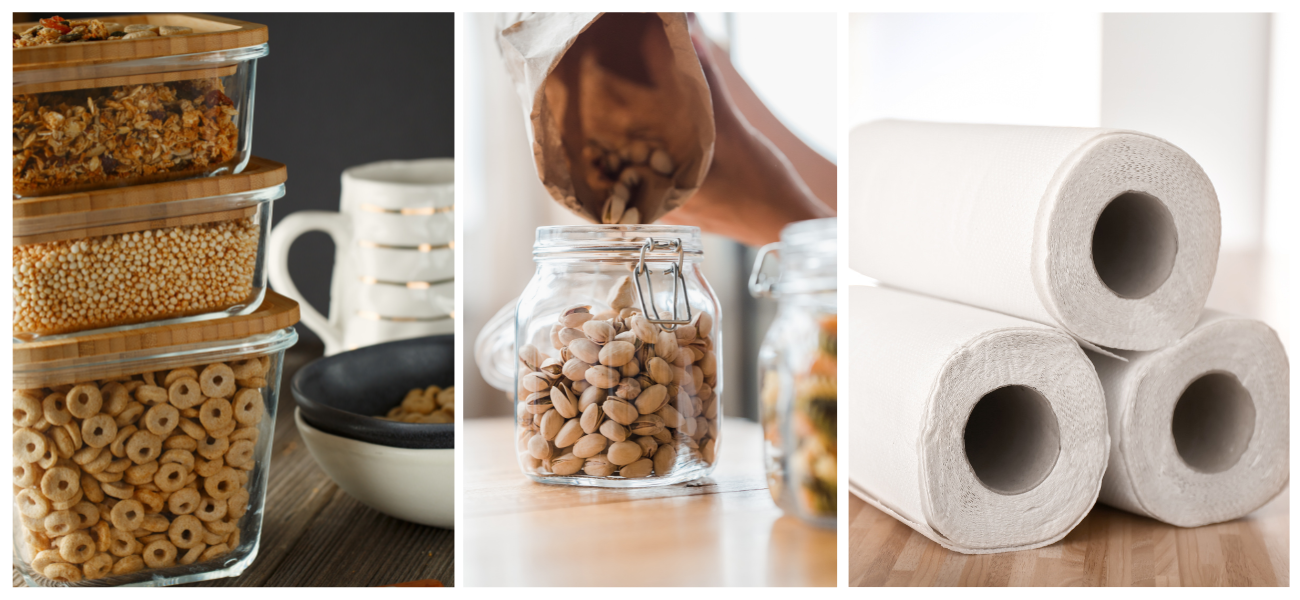
This likely goes without saying, but creating zones in your pantry based on categories also helps maintain an organized space. Zone the pantry based on categories and mount a map on the wall or add it to your household manual to ensure everyone in your home knows where to retrieve and replace each item.
#8 Rotate Stock to Ensure All Food Items Are Consumed
When restocking your pantry, bring older items to the front and put new items at the back. This way, you use older items first and reduce the chance of items going unused and expiring. All items will be consumed and none will go to waste. Also keep a running list of essential items in your pantry. Use an app like List Ease or a smart home tool designed specifically for kitchen storage.
#9 Add a Rolling Cart for Small Appliances
Last but not least, add a rolling cart for small appliances like toaster ovens, coffee makers, and immersion blenders. Roll your cart from the pantry to the kitchen island any time you need to use an appliance but do not want to lift and carry it out.
10 Space-Saving Kitchen Storage Solutions Beyond Your Pantry
Now that your pantry is perfectly organized, let’s take a look at the rest of your kitchen. Slide-out spice racks, hidden storage, and accessibility devices can all make your kitchen both look and function more seamlessly!
#1 Install a Pull-Out Spice Rack or Narrow Slide-Out Pantry for Glasses

First on our list of the best kitchen storage ideas is to install a pull-out spice rack for cooking or a narrow slide-out pantry for stemless glasses. Installing a pull-out spice rack in one of your kitchen cabinets can be a game-changer for small kitchens. It’s perfect for that awkward, small space between appliances. With a pull-out spice rack, you need not rummage through cluttered cabinets or walk all the way over to your pantry.
The convenience of a pull-out design means that all your spices instantly available and neatly organized right next to your range. Plus, the compact design of a pull-out spice rack saves valuable counter space — making it an ideal solution for small kitchens. Imagine what you could do with that extra counter space!
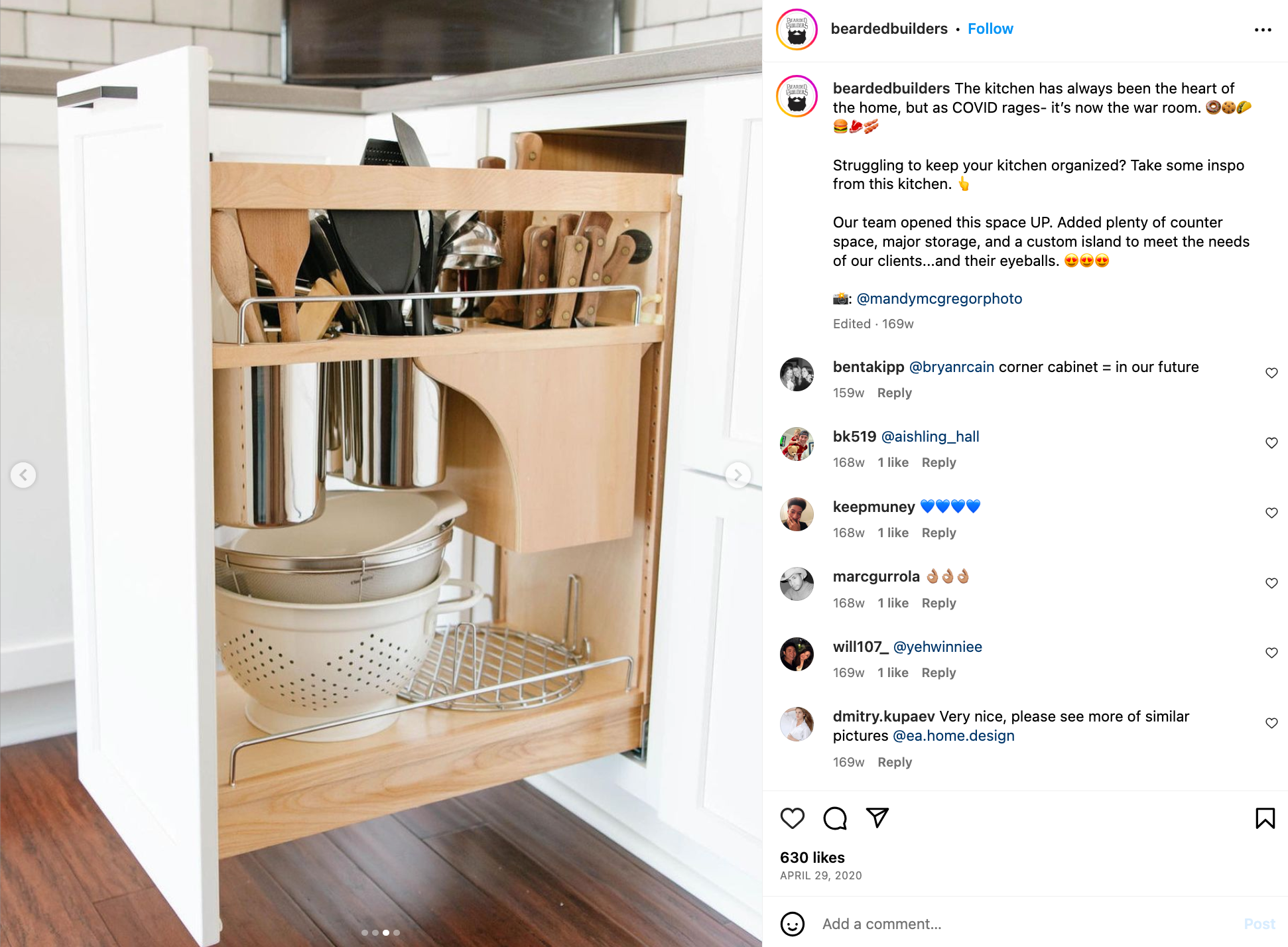
Slightly wider than a spice rack, a slide-out pantry allows you to store stemless glasses and bowls in a tall vertical space near your fridge, dishwasher, or kitchen sink. This design offers children access to the dishes they use most often while preventing you from reaching up over your kitchen counters. Each of us has stood on our toes to grab a glass, only to watch it tumble to the floor and shatter. A slide-out pantry lessens the likelihood of those losses.
Hot Tip: In your prep kitchen, consider installing a slide-out for cutting board storage!
#2 Build a Butler’s Pantry for Prepping Drinks and Hors d’oeuvres
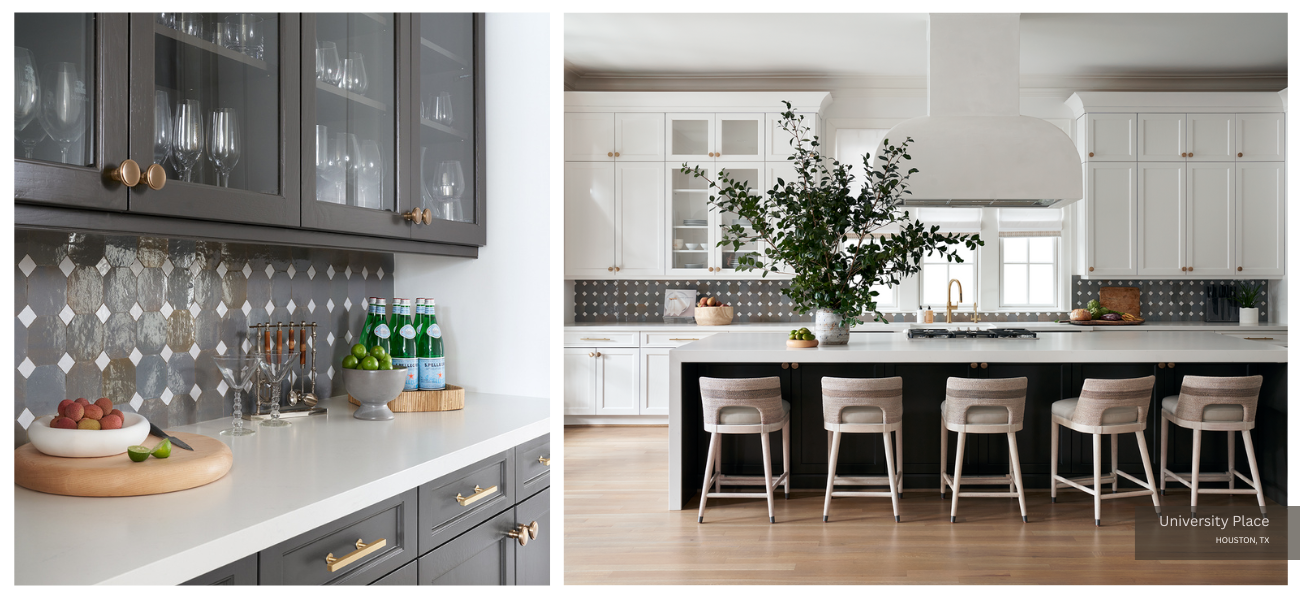
Building a butler’s pantry is not only a practical addition to your kitchen, but also a little bit luxurious. Butler’s pantries offer extra storage space, enhanced organization, privacy during entertaining, and a convenient serving area nestled directly between your kitchen and dining room. A butler’s pantry allows you to prep drinks and hors d’oevres during a date night or while entertaining, but it can also increase your home’s resale value, make your kitchen workflow more efficient, and keep guests out of your busy kitchen while entertaining.
#3 Opt for Double Islands to Maximize Storage and Counter Space
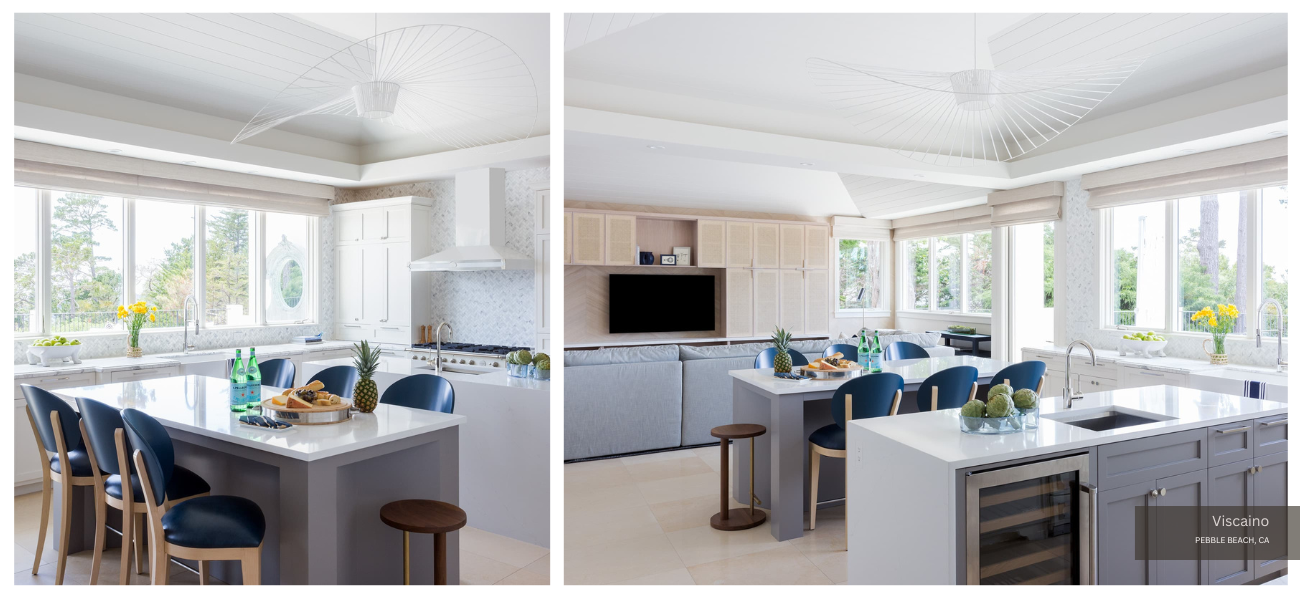
Next, consider adding two islands to your kitchen for ample storage and counter space. With two islands, you can enjoy twice the amount of countertop space for meal preparation, cooking, baking, and other kitchen tasks. Designate the island closer to your range and refrigerator for food prep and the other for serving drinks or enjoying snacks. In a spacious kitchen, double islands can also help improve the flow of movement. It allows multiple people to work in the kitchen simultaneously without feeling cramped or bumping into each other.
#4 Consider Adjustable Shelves to Accommodate Everything in Your Kitchen Cabinets
To make the most of your kitchen cabinets, install adjustable shelves that can accommodate short and tall, heavy and lightweight items. Adjustable shelves allow you to customize the interior of the cabinet to fit your specific storage needs. Being able to adjust the shelves also means you can remove them for cleaning or repositioning without hassle. This makes it simpler to clean the cabinet thoroughly, ensuring a hygienic storage space for your belongings.
#5 Work with a Designer to Create Custom Shelving and Storage Solutions
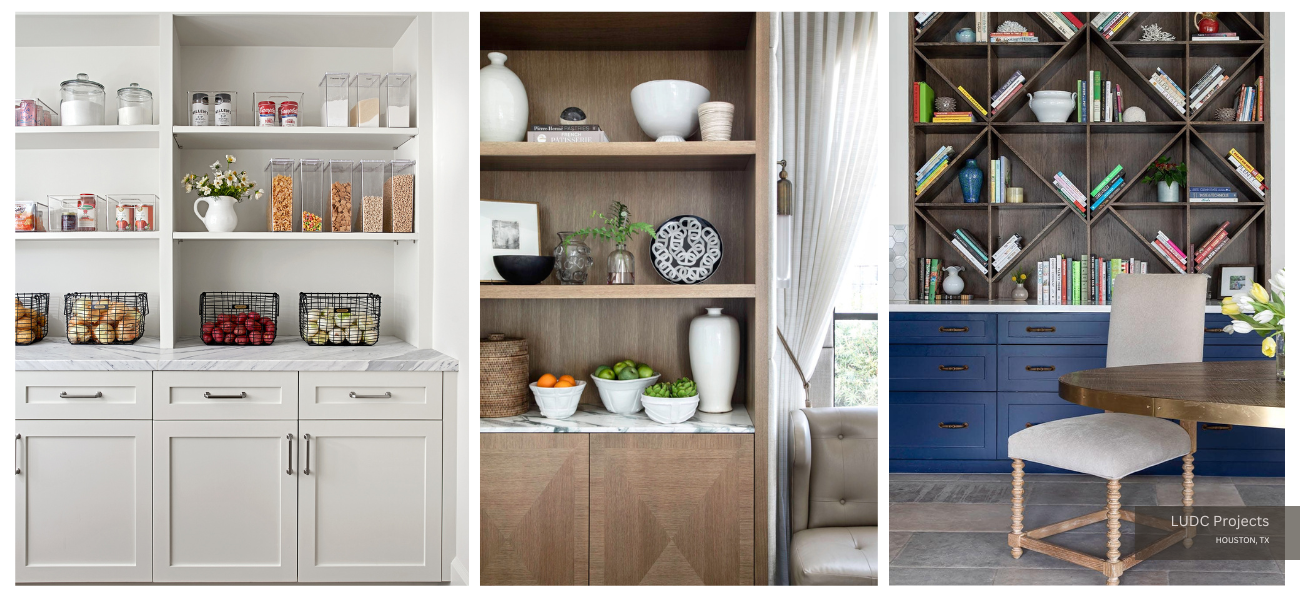
Whether you want to display a collection of beloved cookbooks, organize your pots and pans, or keep sharp knives out of drawers, working with a designer ensures you create the custom shelving your kitchen deserves. For example, the LUDC design team crafted custom kitchen bookshelves as a special spot for our Dumbarton Project homeowners.
Our design team found inspiration in a geometric design that came to life with the triangular shelves pictured above. We blended a handsome wood grain with navy to create cohesion with the color of the kitchen cabinets. These elevated shelves are the perfect spot for our clients to share little pieces of their life with family and friends.
#6 Blend Appliances and More with Gorgeous Millwork
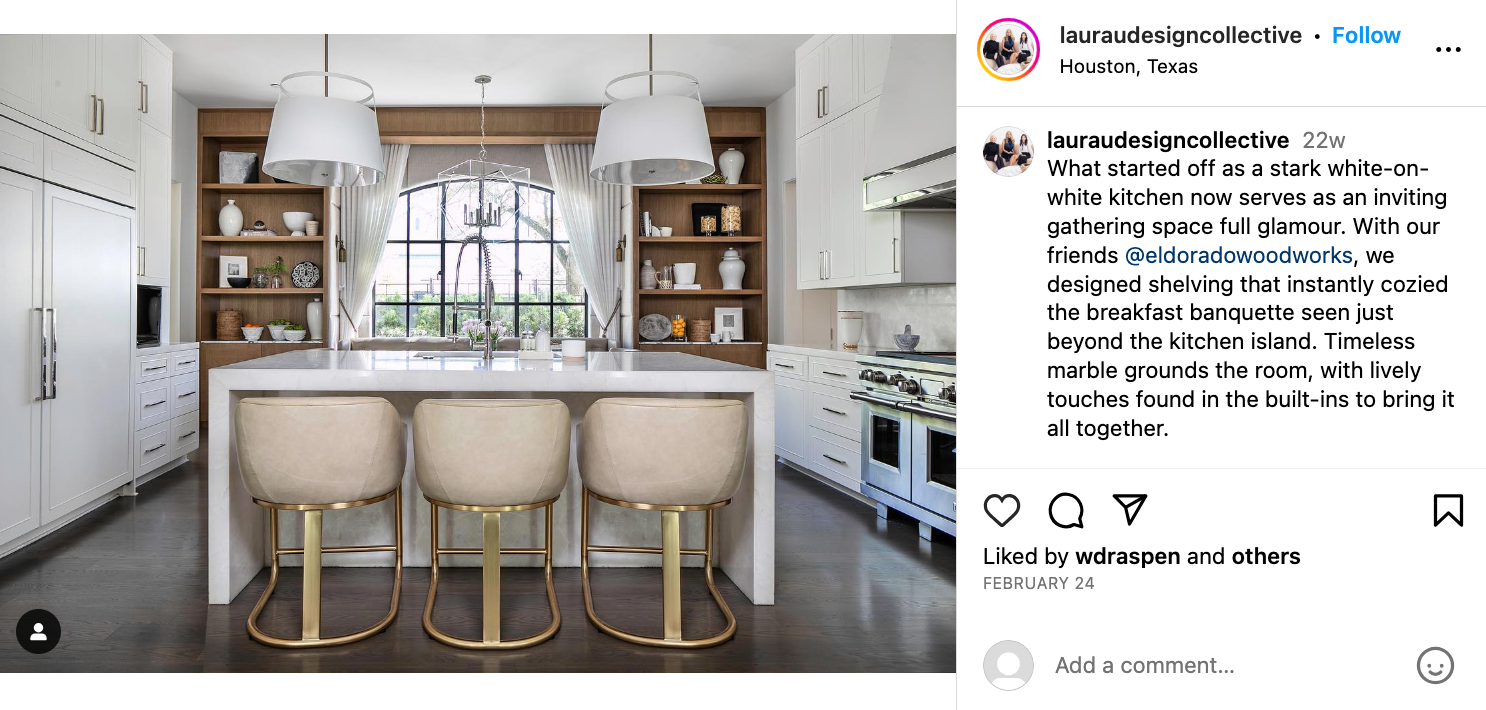
To blend your fridge and freezer with surrounding cabinetry, work with a design firm to conceal those appliances. For example, the LUDC team integrated a spacious day pantry in our Hedwig Village kitchen. That kitchen is pictured earlier in this post. Above is another kitchen designed by our team at Garnet Residence. Designing millwork to blend appliances and more creates a more seamless space that actually feels larger and less cluttered.
#7 Add Lazy Susans to All Corner Cabinets
We always recommended installing turntables in your pantry, but these swiveling shelves also help organize corner cabinets while preserving precious counter space. In addition to turntables, consider other storage solutions to organize cluttered cabinets and kitchen drawers.
For example, vertical dividers prop lids up in cabinets instead of allowing them to slip and slide everywhere while you search for a specific size. Shelf risers also help maximize empty vertical space — making it much easier to access items stored on different levels.
#8 And Install Lift-Up Shelves in Base Cabinets
@lauraudesigncollective 6 things you never you needed in your kitchen! 🤍💙 #lauraudesigncollective #kitchengadgets #kitchen #helpful #foryoupage #foryou #interiordesign #renovation ♬ Darling – Trees and Lucy
Mixers, immersion blenders, salad bowls, and other kitchen items can be heavy, oddly shaped, and a bit unwieldy. Installing lift-up shelves in base cabinets prevents you from bending down or leaning over to carry heavy items to the countertop. Check out this mixer lift we added to a base cabinet in one LUDC project.
#9 Hang Stemware to Save Space and Protect Delicate Rims
To protect the rims of delicate port and other wine glasses, hang stemware from specialized racks made of wood or metal. This not only spares the thin glass but also saves storage space in your cabinets. Mount racks below upper cabinetry, in cubbies on your kitchen island, or inside cabinets.
#10 Stock a Bar Cart for Entertaining
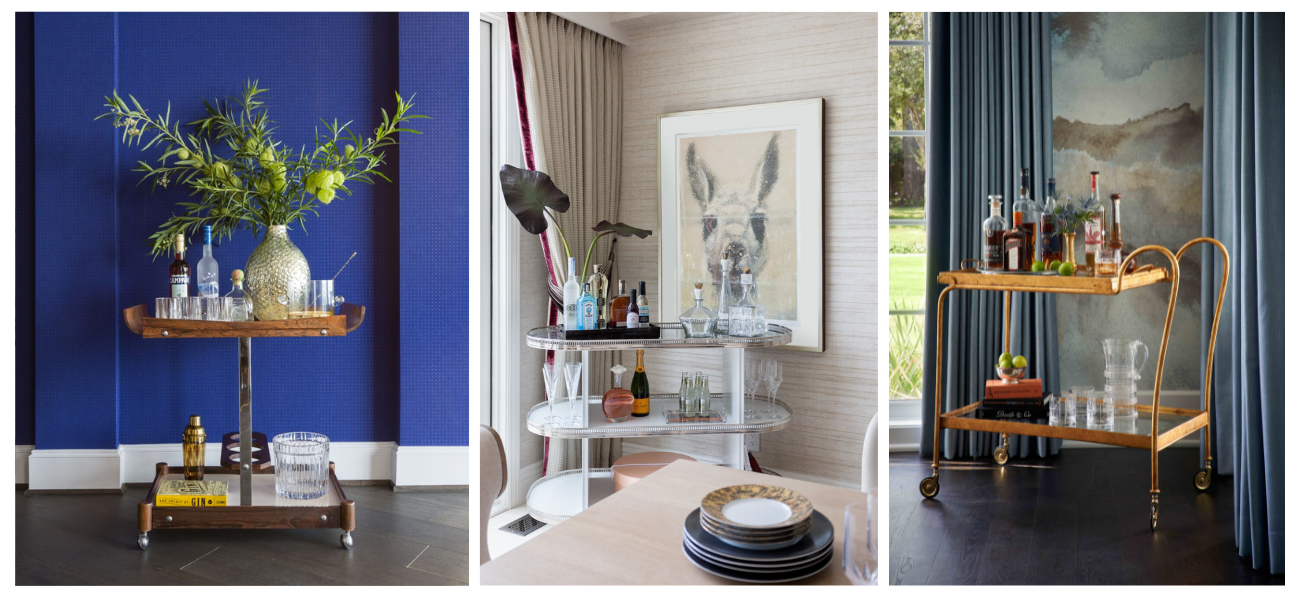
Last on our list of kitchen storage ideas but certainly not least, stock a bar cart for entertaining and store it in your walk-in pantry or dining room. This creates a portable home bar that captures your unique aesthetic while serving guests in a multitude of locations throughout the home.
Ready To Pursue Your Own Kitchen Remodel?
Reach out to the team at Laura U Design Collective for customized storage, stunning millwork, and other guidance as you prepare for a kitchen renovation. Curious about one of the storage solutions outlined above? Leave your comments below!


